In an earlier post, I outlined the differences between in-frame and lay-on door styles. With the in-frame door largely considered to be a more traditional look and feel, we’ll now explore the versatility of the lay-on options, which extend from contemporary to classic styles, in solid timber and engineered timber options.
Door Styles
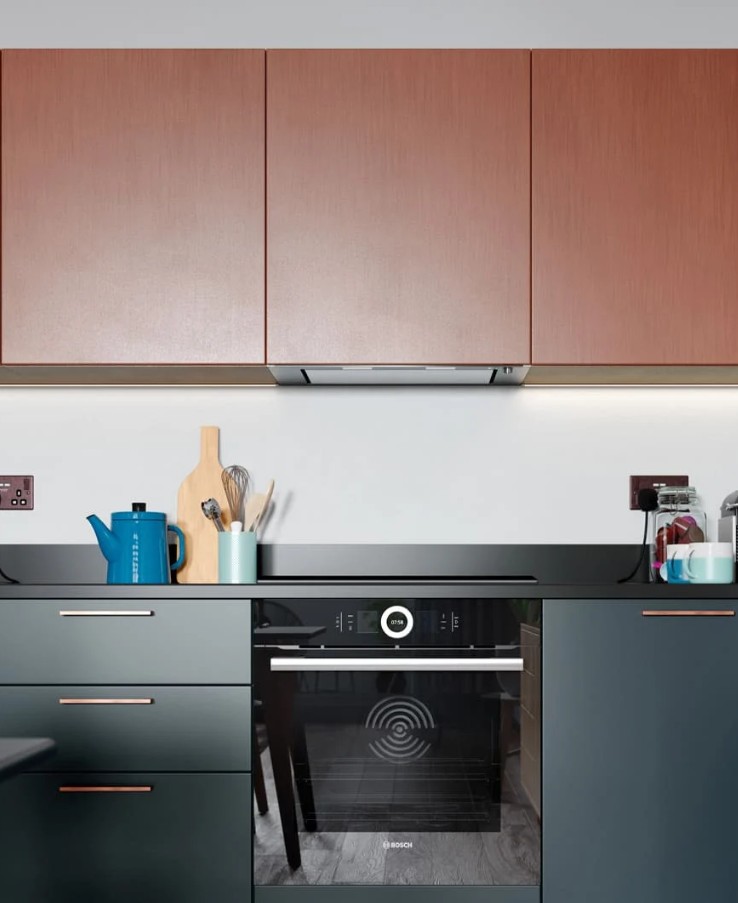
Flat Panel (Slab)
You’ll often see flat panel (also known as slab) doors in modern and contemporary kitchens as they work well with their minimalist aesthetic. They can be fitted with handles or used as part of a true handleless rail system (pictured left, by Sinc Kitchens).
Think chic, sleek simplicity.

Handleless
The handleless kitchen keeps lines clean and uncluttered and can help instantly elevate your look with minimum effort. The absence of handles allows the eye to focus on the lines of the kitchen, without distraction. The result is that the space looks open, fresh and modern.
The J Pull handleless profile (pictured left, by Sinc Kitchens) is an integrated handle with a J shape cut out.
True Handleless is an ultra-contemporary style, which incorporates a top rail on which the worktop sits, allowing your fingers to slot into the top of the cupboard or drawer.
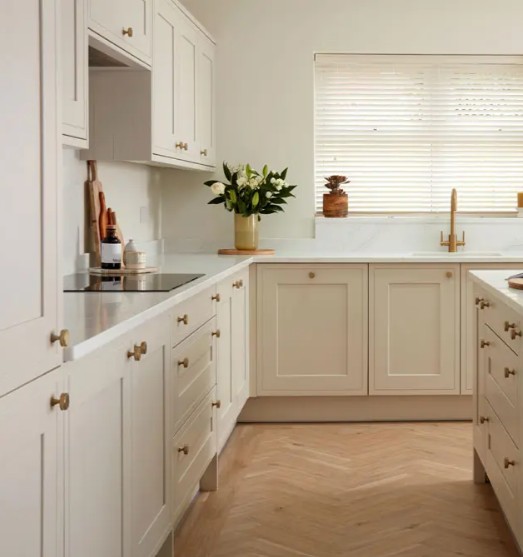
Shaker
Known for simplicity, functionality, and craftsmanship, Shaker kitchens often showcase inset panel doors with recessed centre panels, along with traditional hardware like simple knobs or handles.
Incorporating simplistic styling and clean lines, the Shaker blends in well no matter your chosen aesthetic, whether it’s traditional or modern.
Lay on shaker doors come in a variety of styles such as, in-frame effect, classic, narrow/slim and micro (pictured left, in-frame effect shaker by Kitchen Makers Burbidge). These variations offer modern twists on the classic design, with differences in beading* and panel depths.
*What do we mean by beading?
Beading is a decorative detail that can be added to the edges of the door or frame. It is typically a rounded or grooved molding, that softens the lines of a shaker door or frame.
Door Materials – Solid Wood
Solid Oak:
The oak kitchen is making a comeback, but with a modern twist. Design experts say the “honey-toned” look of the past is out, and a fresh, natural aesthetic is in. Today’s oak kitchens feature light-washed, matte finishes and clean lines.
The oak shaker is constructed with a solid oak frame with oak veneer centre panels.
Right: Oak shaker door by Sinc Kitchens www.sinckitchens.com
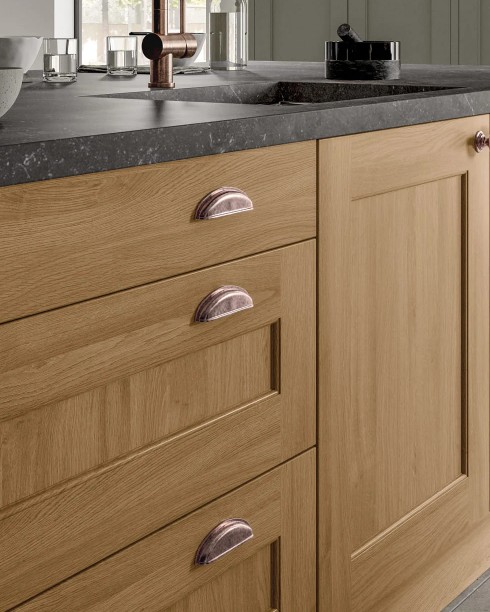
Painted Wood Door:
Many of our customers choose painted wood doors, in shaker or square raised panel styles. They are constructed with a solid ash frame with ash veneer centre panels, and thoroughly primed prior to being painted – there are plenty of colours to choose from, or you can request a bespoke colour match.
Many styles are also available in a sanded finish, ready for you to paint or stain to your own specifications.
Right: Painted timber raised centre panel style. www.sinckitchens.co.uk

In Summary – solid wood doors
Solid oak doors are a more costly option, which you’d expect given that you’re choosing a high-quality and desirable material. Generally you’ll find oak more expensive than ash or engineered wood, but the investment pays off with a kitchen that will last the test of time. They will need regular maintenance to keep them looking their best, so be prepared to clean, polish, and occasionally, refinish them. They are also more sensitive to moisture than other materials, so it’s important to minimise exposure to liquid.
Ash framed painted doors are strong and resistant to dents and scratches, which is essential for kitchen environments. There are usually a wide range of colours available in many styles, and some manufacturers offer the option to request a bespoke colour, albeit at an additional cost. They can be touched up where necessary to address any accidental chipping. If later down the line you’re ready to change up the colour of your kitchen, you can easily give your doors a fresh coat of paint.
Door Materials – Engineered Wood
Painted MDF:
Constructed from MDF (medium density fibreboard) and then routered to achieve the design, these doors ensure a stable and unchanging appearance over time. MDF boasts a smoother finish than most other materials, however, as it lacks grain texture, it cannot be stained like solid wood.
MDF is dense and resistant to warping, making it a robust option. Chips or dents can be repaired using a wood filler, sanded and touched up with paint.
Right: Painted MDF www.sinckitchens.co.uk
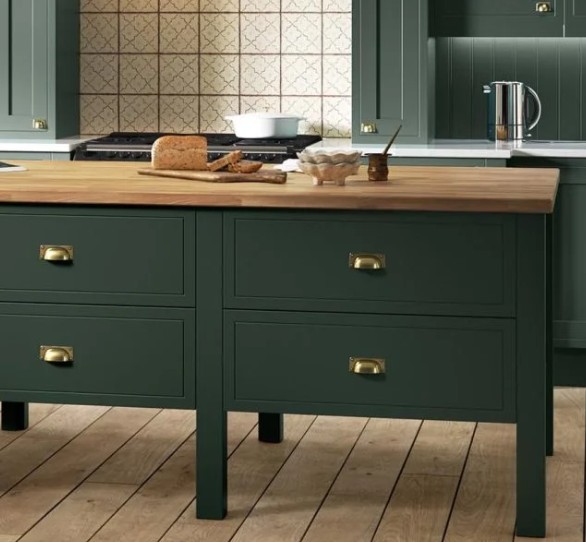
Veneer finish:
If you love wood but find the cost is a barrier, natural wood veneered doors are worth considering. (Right: Painted oak veneer slab www.sinckitchens.co.uk). You can choose a natural wood, painted or stained finish.
A thin layer of real wood (the veneer) is glued to MDF or PEFC chipboard doors to mimic the appearance of solid wood at a reduced cost. When choosing a wood veneer, remember that grain pattern will vary like any solid wood, so you should not expect an identical finish.
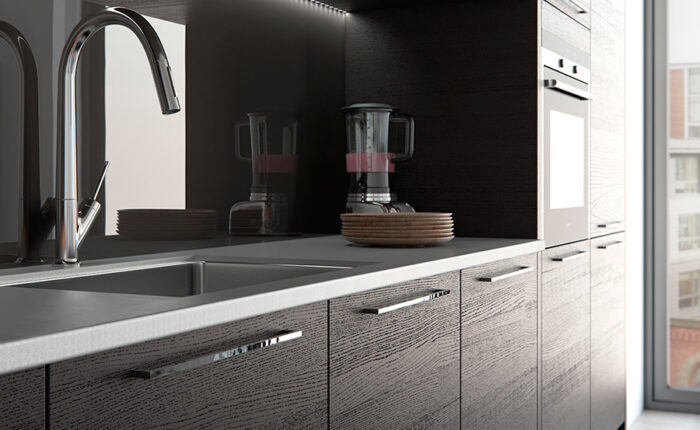
Foil finish:
Foil finish refers to a very thin layer of vinyl infused with resin, often wrapped around a substrate like MDF. They tend to be used to create a contemporary and modern look, although you can also choose a wood grain effect for a more traditional feel, resembling painted wood.
Foil wrap doors are popular because they are cost-effective and easy to clean. However, they can be sensitive to heat and can become damaged if not properly cared for.
Right: Foil wrap finish by Sinc Kitchens
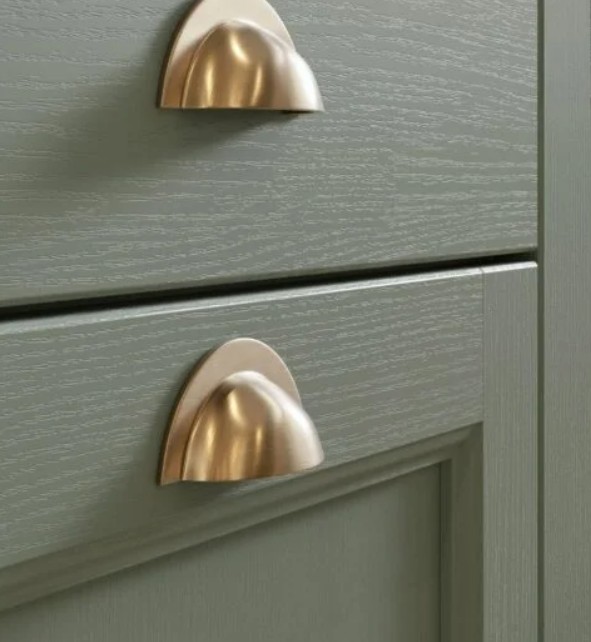
Melamine finish:
Melamine is a thermosetting plastic resin that’s fused to a substrate, usually chipboard or MDF, creating a durable, hard surface. It offers a variety of aesthetics, including matte, gloss, wood effect, concrete or metallic finishes. These doors will be the amongst the lowest cost doors available (pictured right: melamine faced door by Sinc Kitchens).
While melamine is one of the most affordable doors, it is one of the least durable. It can chip or crack under heavy impact and is more difficult to repair. It may not hold up as well to extreme temperature or moisture as some other materials.
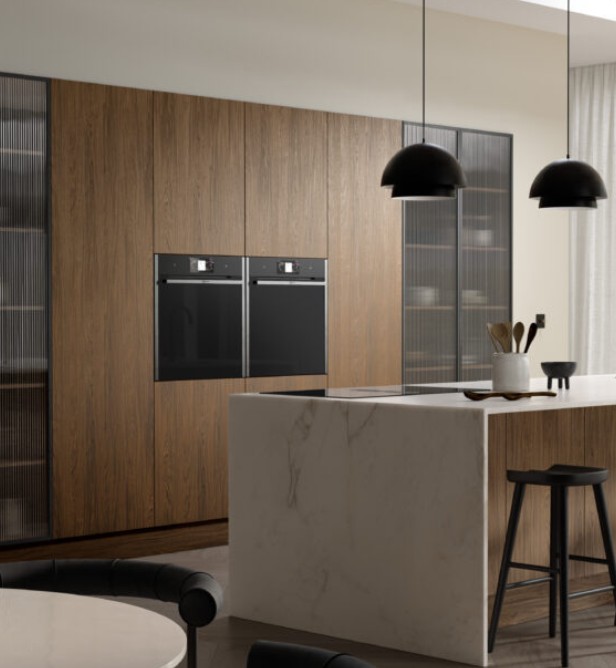
In summary: Engineered wood doors
There are plenty of benefits of engineered wood doors. On the whole, you will find it is a more sustainable and budget friendly option, but they can be harder to fix if damaged. They are durable, but typically do not last as long as solid wood framed doors.
The wood veneer finish offers a reduced risk of distortion if exposed to changes in humidity or temperature, which makes them a sturdier option. It also allows for the look of more costly solid wood at a lower cost. However, it is really important to avoid excessive scratching on these surfaces. They are more prone to water damage and less easy to repair than solid wood.
Foil or melamine wrapped finishes look smart and offer a variety of finishes, making it a versatile option for low budget kitchens. However, if the facing is scratched or damaged, moisture can get into the core and cause it to swell or be vulnerable to peeling or bubbling when exposed to heat and humidity. So if they are not looked after carefully, it diminishes the doors’ protective qualities and aesthetic appeal.
We know that painted kitchen doors can be refreshed or repainted with relative ease, however foil or melamine wrapped MDF doors are far more difficult to update. The surface requires refinishing before recoating with paint.

In our view …
When choosing the right material for your kitchen doors, it’s key to consider a balance of style, durability, and budget.
Think about the amount of wear and tear your current kitchen endures and the time you’re willing to spend on maintenance.
High-traffic kitchens benefit from durable options like solid wood or MDF with a hard-wearing finish. And if you’re after a classic feel, solid wood or wood veneer brings natural warmth but may require more upkeep.
A painted ash door gives you plenty of options to fit your kitchen’s style. Unlike solid oak, you will find there are plenty of ranges available that will suit most budgets.
Foil or melamine finishes are more affordable while still offering variety in colour and texture, although less durable than solid wood kitchens.
Ultimately, your choice should reflect how you use your kitchen and the overall aesthetic you want to create. And remember, a quality kitchen will boost your home’s overall value.

